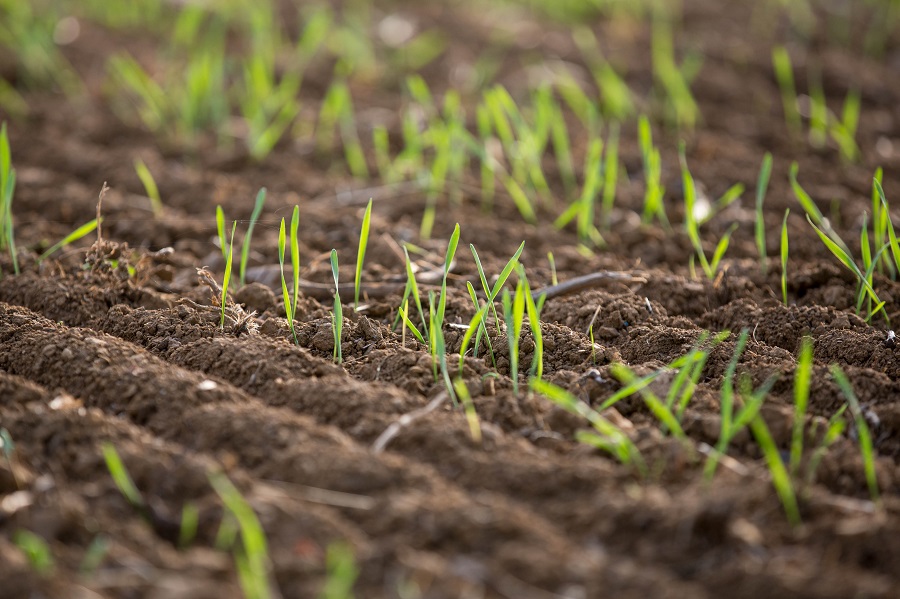Making sure young seedlings aren’t limited by access to nutrients is one of the keys to good early crop development. CPM explores the role nutritional seed treatments can play.
If it’s not measured, then it can’t be managed.
By Rob Jones
Crop nutrition is becoming an increasingly important focus for agronomists and growers for a number of reasons – including plateaued yields, the revocation of essential crop protection products and more extreme seasons, as well as economic challenges and greater environmental pressures.
It’s recognised that there’s a potential gap in supplying the nutrition required by plants during their early growth stages once the mother seed is exhausted, but the crop canopy still isn’t advanced enough to be able to fully intercept a foliar spray, says Agrii research and northern development manager Jim Carswell.
“Improving crop health and productivity in a more environmentally sustainable way can be achieved by using an optimised loading of essential trace elements, delivered as a seed treatment. This can help to redress this balance by filling the hunger gap – covering the period from the seed germinating to the three-leaf stage of the crop, which is about four to six weeks,” he says.
“Getting the nutrition right from the start will help the crop maximise early growth and set it up for the challenges later on in the season. But using a nutritional seed treatment doesn’t mean you can cut out foliar sprays,” he warns.
“Using nutritional or biostimulant seed treatments can help early establishment but as crop canopies develop and biomass accumulates, foliar sprays will still be needed to help optimise nutrient content. Good crop establishment is the key to driving yield, and a measured nutrient input, in the form of a technical seed treatment, can play a critical role in achieving that goal.
“Nutrients delivered directly to the seed can help stimulate rooting, which in turn increases uptake of available soil nutrients. This means you combat the effects of nutrient ‘lock-up’ caused by pH, dry conditions, cold and/or wet soils, high or low organic matter soils and light soils. The main focus has to be to feed the plant, not the soil,” explains Jim.
Knowing exactly what nutrient balance is appropriate for a particular crop in those very early stages of development relies on a combination of factors, including being able to accurately analyse the nutrients already in the soils. But to get the big picture, it’s also useful to look at the nutrients present in the grain from the previous crop, he says.
Jim explains that while soil analysis is essential, it must be broad spectrum and include trace elements for added insight. Furthermore an assessment of biological activity in the soil can help highlight any soil health issues potentially restricting output – such as soil structure, compaction and water availability.
“If it’s not measured, then it can’t be managed,” he says. “Grain analysis helps to provide a retrospective position, and this is very important for adapting strategies going forwards.
“Soil analysis provides a better understanding of the P, K, Mg and trace elements in the soil, but it doesn’t tell us what is necessarily available to the plant. What has become increasingly clear is the value of microbial activity in the soil surrounding a seed when it comes to accessing nutrition. Although we’re very good at measuring factors, the ability to interpret them is very different,” adds Jim.
Nutritional seed treatments often contain many essential trace elements – such as copper, which is needed for the production of lignin used to strengthen cell walls and help combat the effect of fungus penetration; zinc, which is critical for root development and has been found to reduce the affects of water logging; and manganese, for boosting chlorophyll production and nitrogen utilisation.
Jim believes it’s very important to understand there are significant differences in the quality of seed treatments on the market, so he suggests it’s sensible to look at the loading of the essential elements it’s delivering.
“For example, Zax seed treatment provides 450g of zinc, which is a high loading compared with other zinc-based products on the market,” he says. “Agrii also recommend the manganese-based seed treatment i-Man, which has a dual mode of action in that it’s absorbed by the seed but is also taken up by the roots.”
Agrii replicated trials indicate the critical impact that soil analysis and bespoke seed treatments can have on crop performance. Jim says there’s a clear and positive benefit from using nutritional seed treatments over a wide range of soil types and seasons. He adds that a mindset change will help growers truly understand the benefits of seed treatments – it’s clear they can’t be used in isolation, but as part of a programme.
“Too many growers think soil analysis and the use of foliar sprays can rectify early deficiencies, but by then it’s too late because yield potential is set early in the crops development. More growers now recognise the benefits of analysing the grain from the previous crop as an additional guideline to help in planning nutrient programmes.
“I believe that growers are becoming more aware of the importance of grain analysis and momentum is already growing to support its use as a standard nutritional management tool to help optimise output.




